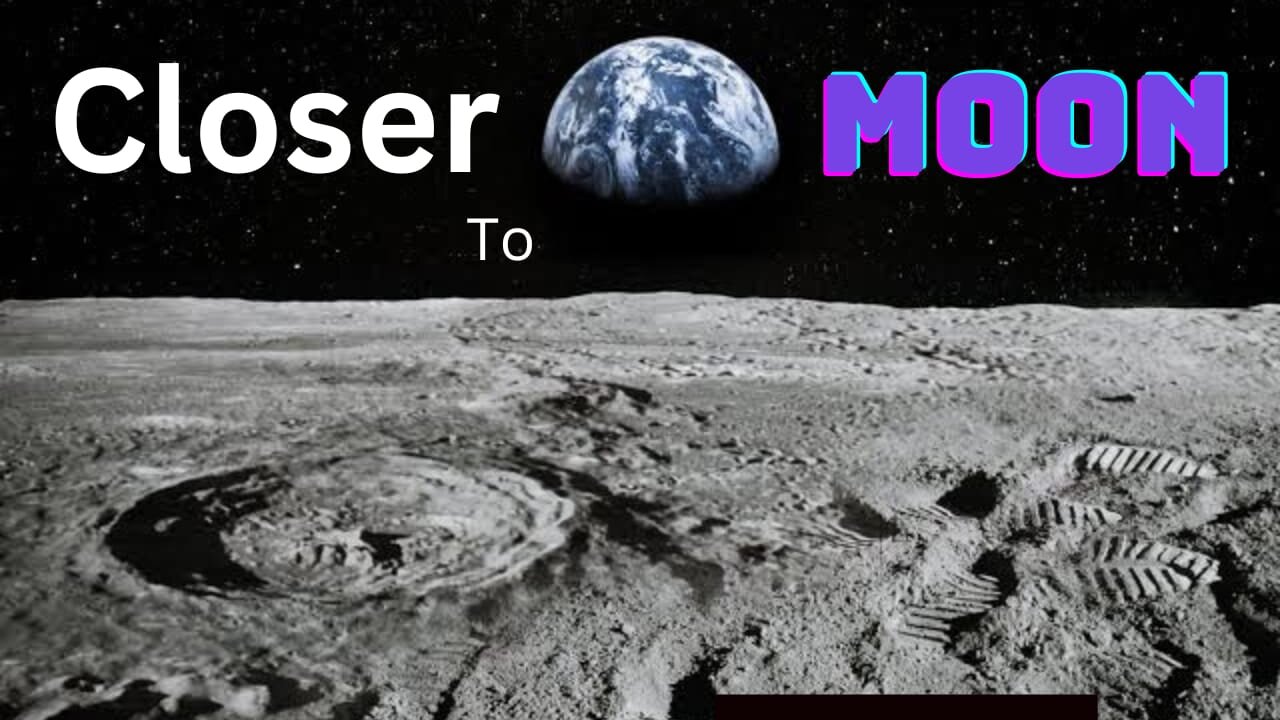Premium Only Content

Moon Views by Apollo 13
Apollo 13 was the third crewed mission in NASA's Apollo program and was intended to be the third mission to land humans on the Moon. However, an oxygen tank explosion in the service module forced the crew to abort their lunar landing and perform a critical return to Earth. As a result, Apollo 13 did not land on the Moon's surface, but it did provide valuable views and observations of the Moon during its journey.
Here are some key details related to Apollo 13's views of the Moon:
Moon Flyby: Apollo 13's planned lunar landing site was the Fra Mauro formation, but due to the explosion, the mission had to be altered to a "free-return trajectory." This meant the spacecraft would swing around the Moon and return to Earth without any major engine burns. During this trajectory, the crew had unique views of the Moon's surface from space.
Lunar Observation: While Apollo 13 didn't have the opportunity to land on the Moon, the crew members—James A. Lovell Jr., John L. Swigert Jr., and Fred W. Hayes Jr.—observed the Moon from their spacecraft. They took photographs and made observations of various lunar features, including craters, mountains, and the lunar landscape.
Lunar Photography: The crew used handheld cameras to capture images of the Moon's surface during their flyby. These photographs provided valuable scientific data about lunar geology and helped to further our understanding of the Moon's geological history.
Scientific Insights: Even though Apollo 13 faced a life-threatening crisis, the mission still contributed to scientific knowledge. The observations and photographs taken during the Moon flyby helped researchers study the Moon's surface features, morphology, and topography.
Navigation and Course Correction: The Moon was used as a navigational reference point during Apollo missions. The crew and ground control used the Moon's position in the sky to adjust the spacecraft's trajectory. This was especially crucial during the Apollo 13 mission, where precise course corrections were necessary to ensure a safe return to Earth.
Mission Impact: The Apollo 13 mission, despite not achieving its original lunar landing objective, demonstrated the importance of quick thinking, problem-solving, and teamwork in the face of unexpected challenges. The crew's ability to work with mission control to devise creative solutions for re-entry and safe return was a testament to human ingenuity.
In summary, while Apollo 13 did not land on the Moon, its trajected provided the crew with unique views of the lunar surface and enabled them to capture photographs that contributed to scientific knowledge about the Moon's geology and terrain. The mission's challenges and successful return also highlighted the resilience and determination of the astronauts and the entire Apollo program teammates
-
 LIVE
LIVE
Dr Disrespect
6 hours ago🔴LIVE - DR DISRESPECT - ARENA BREAKOUT: INFINITE - ESCAPE OR LOSE EVERYTHING!
1,201 watching -
 LIVE
LIVE
LFA TV
11 hours agoLFA TV ALL DAY STREAM - WEDNESDAY 9/17/25
1,415 watching -
 38:45
38:45
ArturRehi
5 hours agoZapad 2025 — War Games with No Reserves | Ukraine Update
4.75K -
 1:10:31
1:10:31
vivafrei
3 hours agoKash Patel int eh Hot Seat! Kirk Assassin Discord Messages Leaked! Ostrich Farm Under Surveillance?
137K56 -
 1:46:45
1:46:45
The Quartering
4 hours agoCharlie Kirk Revenge! 100s of Woke Teachers Fired, Twitch CEO Called To Testify Over Hasan Pike!
131K33 -
 32:01
32:01
Stephen Gardner
2 hours agoBiden’s FBI PLOT to Silence Charlie Kirk EXPOSED!
10.5K15 -
 22:21
22:21
Jasmin Laine
2 hours ago“We're DONE Talking”—96 CEOs REVOLT as Watchdog CONFIRMS “Liberals BROKE the Law”
3.34K5 -
 1:22:53
1:22:53
The HotSeat
2 hours agoFed Cuts Rates & Congressman Calls for Firing Squad – America at a Crossroads
5.31K9 -
 1:33:58
1:33:58
Darkhorse Podcast
3 hours agoHonoring Charlie Kirk: The 295th Evolutionary Lens with Bret Weinstein and Heather Heying
21.3K15 -
 1:11:51
1:11:51
Russell Brand
5 hours agoCharlie Kirk Murder Suspect Faces DEATH PENALTY, As Media Creates Love Story Narrative - SF635
204K81